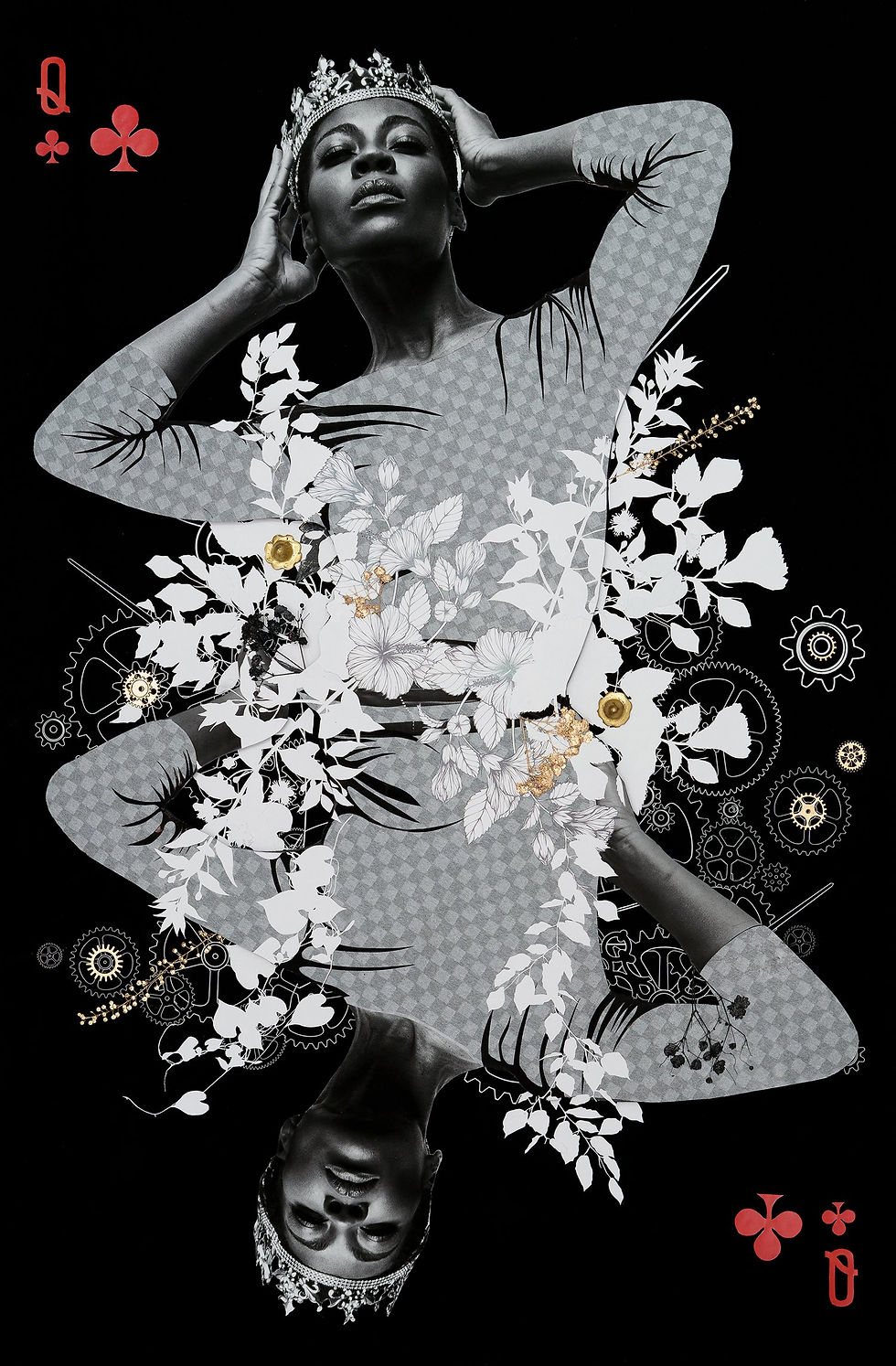Narrative quilts and paintings: Faith Ringgold
- Anthony Roberts

- Feb 20, 2022
- 4 min read

Freedom of Speech, 1990
Faith Ringgold
Acrylic and graphite on paper
24 x 36 in
Faith Ringgold (b. 1930) is an American visual artist whose narrative works speak directly to her life experience as a Black woman in the United States.
“I’m always thinking about what can be better. And if you don’t get it out there, the situation will never change.”

Credit: New York Times
Ringgold was born and raised in Harlem, New York during a golden age of American art and culture known as the Harlem Renaissance. Her childhood home was blocks away from the homes of writer Langston Hughes and musician Duke Ellington. Growing up in this cauldron of creativity undoubtedly influenced the young Ringgold’s creative inclinations. She was also encouraged by her parents, particularly her mother, Willi Posey, who worked as a seamstress and clothing designer. Willi Posey would often give Faith some of her scrap materials for art making.
At that time, most homes didn’t have air conditioning, so on warm summer evenings, families would go to the rooftop for fresh air and relaxation. The adults would play cards, while Ringgold and her friends would lay and watch the stars. This experience became the inspiration for her later work Tar Beach and the related children’s books.

Tar Beach #2, 1990
Faith Ringgold
Multicolored screenprint on silk plain weave, printed cotton plain weave, black and green synthetic moire
66 x 67 in
After graduating from the City College of New York with a degree in art education (she couldn’t major in art as a woman at the time), Ringgold embarked on a career as a professional artist. With zeal and little guidance, she entered the male-dominated field. For years, Ringgold struggled to find gallery representation, but she kept at it, and over time created a path that others would follow.
Early in her career, Ringgold modeled her work after impressionist painters she learned about in school. But her subject matter and style evolved sparked by the Civil Rights Movement of the 1960s and the writings of James Baldwin (Ringgold taught Baldwin’s younger sister).
Ringgold’s political voice captured through her art and organizing efforts gave her a reputation of an activist: initially reviled, later revered. Throughout the 1960s and 1970s, Ringgold advocated for a number of issues: justice for Angela Davis and Attica prisoners, anti-Vietnam War, and more women and people of color at the Whitney Museum.
In response to the Civil Rights Movement and the subsequent violence that erupted across the country, Ringgold created a long-running series simply titled, American People. The series captured her view of race and gender relations in the United States at the time.
American People Series #18: The Flag is Bleeding depicts two men flanking a woman with an American flag superimposed on top of them.
The man on the left is a Black man, dressed in all-black perhaps signifying his association with the Black Power movement. His hand is placed over his heart, in the customary way that Americans do when pledging allegiance to the flag, but it covers a wound. The cause is unclear. It could be self-inflicted. Or it could come from elsewhere, maybe the flag itself. The knife he holds could be a sign of aggression or self-defense.
The man on the right is dressed in a suit, representing the power structure. The woman in the middle holds the arms of each man as if trying to bring them together. On top of the scene is the American flag with blood spattering the stripes.
“I just wanted to give some understanding of what America is about. You notice there is no Black woman in the picture. The white woman was trying to bring the Black and white man together because she really had no power, and the only way to acquire it was by bringing together the men. Black women were literally out of the picture, period. It took decades before people realized that we existed.”

American People Series #18: The Flag is Bleeding, 1967
Faith Ringgold
Oil on canvas
72 x 96 in
In 1980, Ringgold began working with quilts. Her first quilt “Echoes of Harlem” was done in collaboration with her mother. Her quilts evolved to include stories and narrative elements and became known “story quilts”. Ringgold recounts that writing on the quilts started as a way of telling stories that she couldn’t get published at the time.
Ringgold’s first story quilt, Who’s Afraid of Aunt Jemima, reimagines the racist depiction of the mammy figure as a successful entrepreneur. Another series titled The French Connection tells the story of a young African American painter who travelled to France in the 1920s. There, she posed for Matisse, visited Gertrude Stein’s salon and summoned powerful Black women from past and present to sew a sunflower-themed quilt in Arles with Vincent Van Gogh proffering the ladies flowers. The French Connection was inspired by a trip that Ringgold took to Europe in 1961 with her mother and two daughters.

The Sunflower Quilting Bee at Arles, 1996
Faith Ringgold
Silkscreen
34 x 35 in
Now 91 years old, Ringgold lives and works from her home in Englewood, New Jersey. Just this past week, an exhibition of 135 of her works from the past 50 years is on display at the New Museum in New York, in her first comprehensive retrospective. The exhibition runs through June 5th.
Hear Ringgold and art curator Hans Ulrich Obrist talk about her work:
References:



Comments